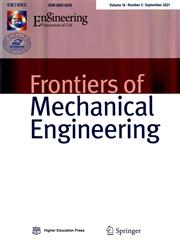一种估算轻型汽车辅助发动机负荷功率需求的新方法
IF 4
2区 工程技术
Q1 ENGINEERING, MECHANICAL
引用次数: 0
摘要
与快速机动化一样,过度的能源需求和空气污染已成为全球范围内的主要挑战。燃油经济性项目和减排目标已被证明是缓解这些问题最有效的方法之一。在制定成功的燃油经济性计划和政策时,了解影响道路车辆燃油消耗的因素是必不可少的。辅助发动机负荷是影响车辆燃油经济性的最常见因素之一。辅助发动机负荷被定义为从车辆发动机获得动力的辅助设备运行所使用的能量。本研究仅限于轻型车辆,采用分析方法从空调负荷、交流发电机负荷、水泵和转向泵负荷三个方面对辅助设备的燃油经济性影响进行评估。作为主要成果之一,本研究开发了一种新的方法来估算和建模空调负荷,这是主要的辅助能源消耗。对于一辆制动马力为100马力(74.7千瓦)的普通汽车,在发动机转速为3000转/分的情况下,发动机辅助设备消耗约13.130千瓦的功率,占总bhp输出的17.6%。发动机功率需求的主要贡献者是空调机组和交流发电机,占总辅助功率需求的97%以上,而水泵和动力转向泵使用的功率相对较少,占总辅助功率需求的3%。本研究中采用的方法的新颖之处在于,它从理论上确定了辅助电力需求的主要贡献者,即空调负荷,而之前的报告使用了涉及经验方法的方法。本文章由计算机程序翻译,如有差异,请以英文原文为准。
A novel approach to estimate power demand of auxiliary engine loads of light duty vehicles
On par with rapid motorization, excessive energy demand and air pollution have become major challenges in the global context. Fuel economy programs and emission reduction targets have proven to be among the most effective in mitigating these issues. In developing successful fuel economy programs and policies, understanding the factors affecting the fuel consumption of road vehicles is essential. Auxiliary engine loads are one of the commonest factors affecting a vehicle’s fuel economy performance. An auxiliary engine load is defined as the energy utilized to operate auxiliary equipment that draws its power from the vehicle’s engine. This study was limited to light duty vehicles, and an analytical method was adopted to assess the fuel economy impact of the auxiliary equipment in terms of air-conditioning load, alternator load, and water pump and steering pump load. As one of the main deliverables, the study developed a novel approach for estimating and modeling the air-conditioning load which is the major auxiliary energy consumer. For an average car of 100 brake horsepower (bhp) (74.7 kW), the engine auxiliary equipment consumes approximately 13.130 kW of power at an engine operating speed of 3,000 RPM, which amounts to 17.6% of the total bhp output. The major contributors to engine power demand are the air-conditioning unit and the alternator, which account for over 97% of the total auxiliary power requirement, while the water-pump and power steering-pump use relatively little power at 3% of the total auxiliary power demand. The novelty of the method adopted during this study is that it theoretically determines the major contributor of the auxiliary power demand, the air-conditioning load, whereas prior reports have used approaches involving empirical methods.
求助全文
通过发布文献求助,成功后即可免费获取论文全文。
去求助
来源期刊

Frontiers of Mechanical Engineering
Engineering-Mechanical Engineering
CiteScore
7.20
自引率
6.70%
发文量
731
期刊介绍:
Frontiers of Mechanical Engineering is an international peer-reviewed academic journal sponsored by the Ministry of Education of China. The journal seeks to provide a forum for a broad blend of high-quality academic papers in order to promote rapid communication and exchange between researchers, scientists, and engineers in the field of mechanical engineering. The journal publishes original research articles, review articles and feature articles.
 求助内容:
求助内容: 应助结果提醒方式:
应助结果提醒方式:


